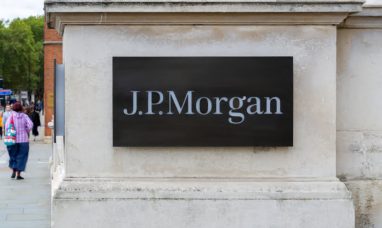Soho House (NYSE:SHCO) made it through the epidemic, but membership growth isn’t likely given the current economic climate. The high debt level suggests either a danger of default in the medium future or costly and dilutive refinancing. Our recommendation is to sell the stock.
The original Soho House opened in London in 1995, and since then it has expanded to become a private membership platform with clubs, hotels, and coworking spaces catering to the media and entertainment industries. It also runs publicly accessible services including eating establishments and online stores. About 168,700 people were members of the original Soho House private members club as of April 2023, representing a growth of 29% year over year. Both “Generation Z” (those aged 26 and under) and “Millennials” (those aged 27 to 42) are rapidly expanding demographic groups. The North American market accounted for 49% of total sales in FY12/2022, followed by the British market at 28%.
Membership to the exclusive private club Soho House, with privileges at any of its 38 “houses” across the world, costs around $4,500 annually. The members-only club Soho House is picky about who they let in.
The sell-side projects three years of stable revenue growth, albeit with a slowing profile. There is no hope for profits and the capital burn is expected to continue through FY12/2024 as the company seeks to expand its worldwide footprint (Soho House Bangkok launched in February 2023).
These Are Our Aims
We’d like to evaluate Soho House’s stock in light of the looming recession and ‘hard landing’ fears. The company’s membership grew by double digits in Q1 FY12/2023, and it opened several new facilities around the world during the same time period. There is an argument for using discretionary expenditure on private members’ clubs for networking and business, especially in the arts and media industries. Our goal is to evaluate the company’s future prospects and the value of its stock.
A Confusing Mix
The company’s strategy is predicated on three pillars: 1) growing the membership base, 2) keeping existing members happy, and 3) diversifying the business to capitalize on cross-selling opportunities. Sales from members increased by 42% year-over-year in Q1 FY12/2023, while the number of members increased by 38%. We see the rate of growth is dropping (page 8 for yearly trend) from 21% YoY in Q4 FY12/2022 and from 48% YoY in Q4 FY12/2021, when the waitlist was 21,000 and 48,000, respectively.
Due to rising operating costs caused by inflation, but also taking into account the impact of the cost of living crisis on its consumers, the company has implemented price increases, some of which are only in the single digits for existing members while others are in the double digits for new ones. This tactic was devised to incentivize repeat purchases from existing customers, but it could backfire by discouraging new ones.
Soho Friends is a limited access program with 62,900 members for persons who have visited as guests for a considerably low annual subscription cost of roughly $130, and it is one way to increase new members. However, there is scant data to support the claim that these directly result in new full-fledged members.
Positively, the number of ‘Frozen’ (suspended) members has dropped to 2,333 in Q1 FY12/2023, and the percentage of frozen members is now lower than it was before the epidemic.
We are concerned about the slowing expansion of the waiting list, as the price increases are unlikely to attract new customers. Expanding the network by opening new locations is useful, but doing so too quickly could lead to higher operating costs and greater losses. We are not anticipating a significant increase in membership numbers at this time.
Worries About the Bank Balance
The company positions itself as a premium hospitality brand committed to providing outstanding service. As a result, intangibles and brand value are prioritized over physical assets; while the balance sheet shows $645 million in property and equipment, over double that amount is held in operating leases.
In order to help pay off debt, the company went public in July 2021. Excluding operating lease commitments, the total debt in Q1 FY12/2023 was $734 million, or 52 times the cash flow from operating activities in FY12/2022. Even before the Fed boosted rates, the company was considered high risk, as seen by the average interest rate paid on fixed-interest debt financing being 8% (page 18).
The company’s financials are precarious, as $591 million in principle is due by the end of fiscal year 12 (2027). The corporation has 3.5 years to either improve its financial condition or generate sufficient free cash flow to qualify for a refinancing. We believe the company will have a difficult time refinancing, as the consensus anticipates an additional $100 million cash burn over the next two years. Any positive conclusion will be extremely costly or dilutive. Our overall assessment is that the likelihood of bankruptcy is moderate to high.
Valuation
Traditional multiples, in our opinion, do not reflect the true market value of a stock. We interpret an EV/Sales ratio of 1.7x (since it takes debt into account) to be indicative of a membership-based business with modest growth prospects. To give you an idea of valuation, WeWork (NYSE:WE) trades at 5.4x EV/sales, whereas LuxUrban (NYSE:LUXH) trades at 2.2x. Planet Fitness (NYSE:PLNT) trades at 7.4x earnings, despite the fact that gym memberships are far more affordable.
Risks
A ‘soft landing’ recession, followed by an economic rebound and a growing desire for consumer discretionary expenditure, might increase the number of people applying to join the club.
To improve its chances of survival, the company could approach investors for funding, including private equity (as of 2012).
The value of equity could go down if the danger of default increases.
Customers would leave and more members would cancel their subscriptions if the economy experienced a harsh landing, putting a damper on revenue, working capital, and growth strategies.
Conclusion
Soho House has a respectable reputation and a small but dedicated customer base, but it has consistently lost money. It has weathered the epidemic and gone public, but the economy is not ripe for expanding a premium, invitation-only membership platform. There is no evidence that the market is undervaluing the company, and the debt load is too large. Our recommendation is to sell the stock.
Featured Image: Unsplash @ Louis Hansel









